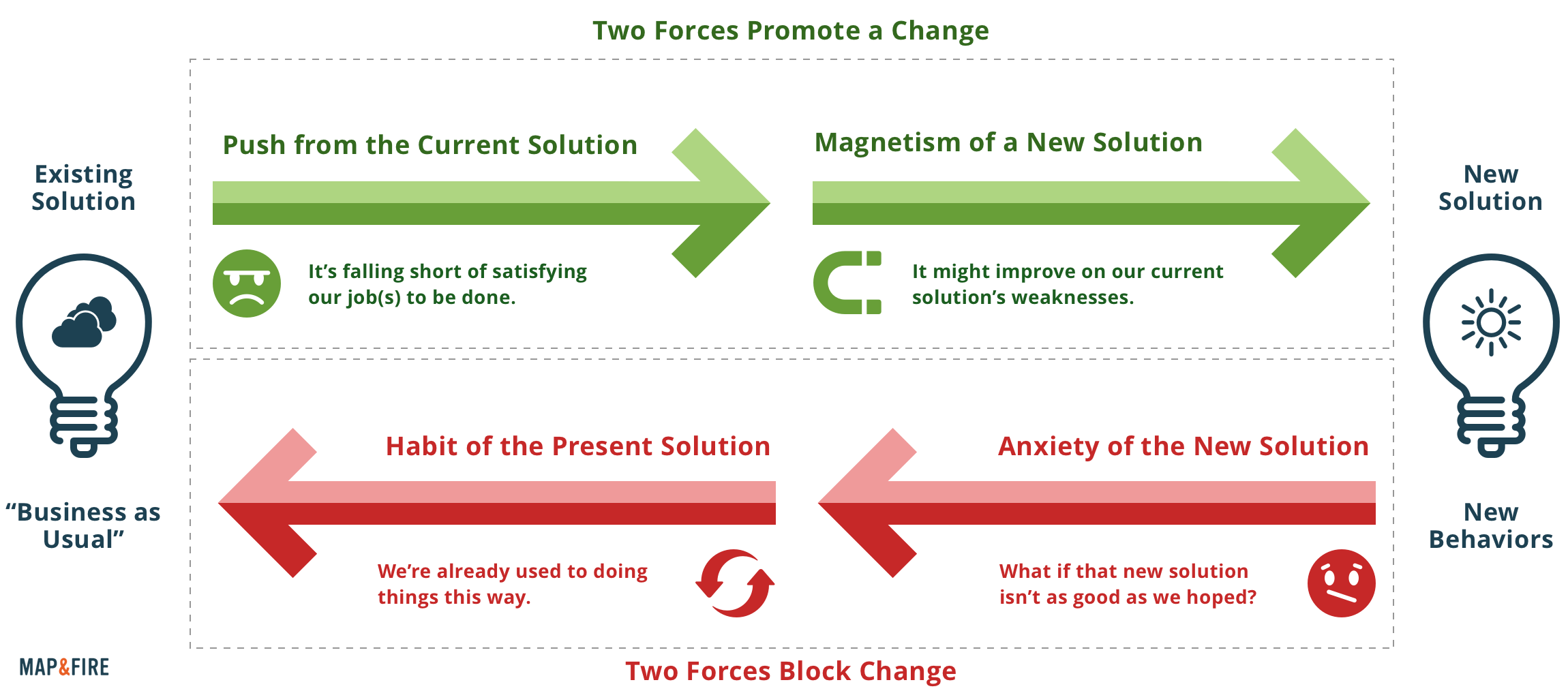Brand and Marketing Field Guide: Marketing
Are you connecting with your target customers by tapping into their emotions?

Marketing Definitions & Examples
Our Content Is Featured In:

Join 6,538 folks who receive our latest insights and you'll get immediate access to our 10 page brand strategy workbook!
Instantly analyze your brand
Use our new positioning app, SmokeLadder, to see where your B2B brand is strong, weak, and where it can stand out from the competition.
Keywords
The words and phrases your audience uses when searching for your products or services. Focus your webpages, articles, advertisements, and other online content around these keywords.
Key Messages
The messages your target audiences need to hear to be motivated to action. These should be informed by, or use directly your Keywords.
Read Our Blog Article On Key Messages:
Channels
The channels through which you will communicate your key messages to your target audiences. A website is an example of one channel.
Customer Relevancy for Keywords
To start gathering an initial set of Keywords, we can use the information we’ve gathered in the previous areas of Lean Strategy to guide us:
- Customers: Who are your Target Customers and what is their Job to Be Done? Your Keywords should be relevant to that Job, not solely your specific solution for that Job.
- Competition: What other products or services do your Customers search for when seeking to satisfy that Job? You should look closely at the words and phrases your competitors use on their websites and marketing materials. Google Suggest is also an excellent source of insight for words and phrases that people really use.
- Offering: How are you providing a unique solution to satisfy this Job? Focus on words related to your unique value proposition and the Features of your Offering that satisfy the Elements of Value your Customers care about.
Keyword Research Tools
In order to do more in depth assessments of Keywords, particularly if/when you’re planning to pay for ads, there are several tools available that can provide more in depth information about the competitive strength of Keywords:
- Google Adwords Keyword Planner:
- https://adwords.google.com/home/tools/keyword-planner
- Free to use when you create a free Adwords account
- Provides search volume ranges, related keywords, competition (number of advertisers using the Keyword)
- You can also access suggested ad bid values which inform competition levels
- Moz Keyword Explorer:
- https://moz.com/explorer
- Paid subscription service, with a friendly, easy to use interface
- Provides search volume ranges, related keywords, competition, difficulty to complete, opportunity to “own”, search engine results page (SERP) analysis (why certain sites do well)
- Wordtracker Keyword Demand:
- https://wordtracker.com
- Paid subscription service (less expensive than Moz)
- Provides search volume ranges, related keywords, competition, search engine results page (SERP) analysis, results from Google, Amazon, YouTube
- Ubersuggest Keyword Search:
- https://ubersuggest.io
- Free tool to help uncover additional / related words and phrases
- Google Trends:
- https://www.google.com/trends
- Free tool to show relative popularity of Keywords over time
Keyword Ownership
There are a couple indicators in your results that will help establish a baseline assessment of their competitive saturation:
- Are there multiple search advertisements at the top and/or bottom of the results page?
- The more ads there are, the more valuable that Keyword is to competitors. If there are multiple ads, it’s likely that the word produces strong conversions for those companies – i.e. Customers that come via those ads perform whatever action the company values: makes a purchase, signs up for a service, etc.
- Of course, the more companies that are already paying for ads around those Keywords, the more expensive it will be for you to purchase ads around the same Keywords — and that means you’ll be paying more money for more head-to-head competition.
- Are the organic results (i.e. non-paid ads) related to well-known, established companies or organizations relative to your industry?
- Companies that have been in the industry a long time, had significant success, or produce quality content related to your industry are likely to have a stronger hold on the highest positions in the search results.
- The more the organic results for your Keywords that are owned by established players who’ve built up referral links over long periods of time, the more difficult it will be to surpass them in the rankings.
4 Forces That Affect Customer Change

To help focus all of these components into messages that will connect with your Customers, we’ll look at the forces that affect your customer’s desire to engage with your Offering.
Forces that Promote Change:
1. Push from the Current Solution: The Customer’s current solution is falling short of satisfying their Job to Be Done in one or more ways.
2. Magnetism of a New Solution: A new solution may be appealing because it improves on weaknesses of the current solution, or offers something that isn’t currently available to your Customer at all.
Forces that Resist Change:
3. Anxiety of Trying a New Solution: Switching to a new solution might cause the Customer to worry: What if that new solution isn’t as good as we hoped?
4. Habit of the Present Solution: The Customer is already used to doing things a certain way. Even if their solution isn’t great, it might be “good enough”, and it might feel like a lot of work to change.
Testing Your Key Messages
While all of these forces are at play with your Customers, some may be stronger than others depending on your industry and Offering. As with the Keywords, it will require experimentation and testing to determine which of the forces most impacts the desire to adopt a new solution for your particular Customers. Some testing options include:
If you have a good amount of traffic on your Website (~a few thousand visitors per month), you can try:
- Track Website Events: You can test different messaging options on your site and track call-to-action events (e.g. clicking a button to sign-up) related to the message over time via tools like Google Analytics.
- A/B Test Your Website: Use a service or plugin that allows you to show one half of your visitors one message, and the other half another message. Using analytics you can then measure which message is more effective at engaging / converting your Customers.
If you don’t have much traffic on your website yet, you can try:
- Online Ads: Service such as Google AdWords are designed to make it easy to test multiple variants of an ad to determine which is most effective at getting clicks. You can create a campaign, apply a set budget, and compare results from your different messages based on click-through rates.
- Online Polling or Surveys: Online polling and survey services allow you to get feedback and opinions on the preferences and opinions of unbiased users for a fee. This can be a great way to get quick feedback prior to testing on your live website or on ads.








